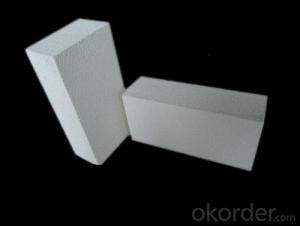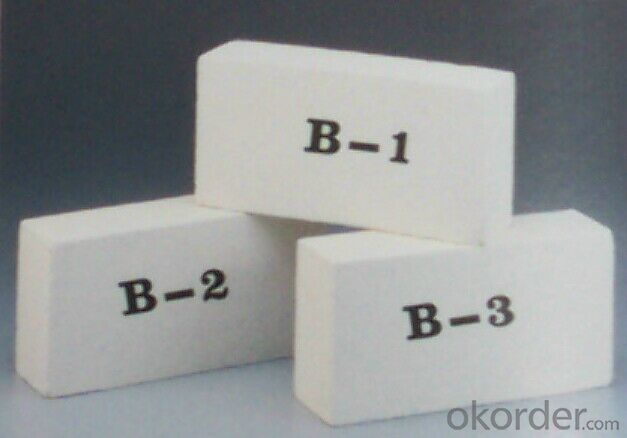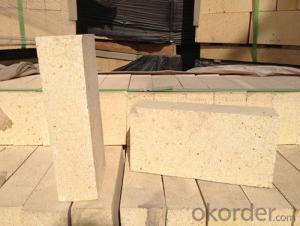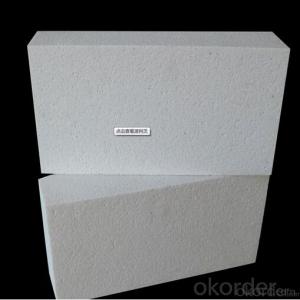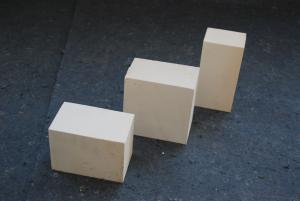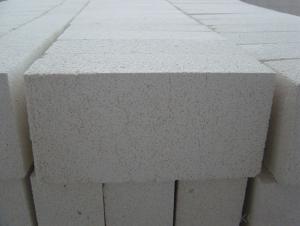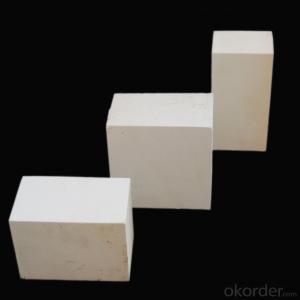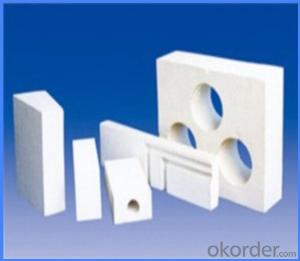Insulating Fire Brick - Refractory JM Mullite Insulation Brick B-1
- Loading Port:
- Shanghai
- Payment Terms:
- TT OR LC
- Min Order Qty:
- 10 m.t.
- Supply Capability:
- 1000 m.t./month
OKorder Service Pledge
OKorder Financial Service
You Might Also Like
Specifications
1. Low density.
2. Classification temperature:1610-1780.
3. Thermal insulation energy-saving effect is good.
High alumina insulation brick,Insulation brick,Fireclay insulation brick
Features:
1. Low thermal conductivity.
2. High strength and resistance to corrosion.
3. Low heat capacity.
4. Low shrinkage after heavy firing.
5. High insulation.
6. High refractoriness.
7. Low density.
8. Good thermal shock resistance under high temperature.
9. Thermal insulation energy-saving effect is good.
Physical and chemical index:
Application:
Insulation brick can be widely used for lining or insulation layers of various industrial furnaces and kilns in metallurgical industry, machine building industry, ceramic industry, chemical industry.
Refractory mullite insulating refractory brick JM 23
Okorder series heat insulation brick
Okorder series thermal insulation brick is an effective, energy saving, low carbon, environmental protection advanced, according to the ASTM standard manufacturing products. Okorder series products are best Li Ning and insulation in all types of industrial furnaces in the metallurgical field, aluminum, petrochemical, electric power and glass ceramic materials. They can be used as part of the working layer of thermal insulation or non - melting. Products have been widely used in the following furnace, achieved satisfactory results.
Application of heat preservation brick
Metallurgical Industry: blast furnace, hot blast furnace, heating furnace, etc..
Petrochemical Industry: ethylene cracking furnace, hydrogen production furnace, primary reformer, heating furnace, etc..
Ceramic industry: roller kiln, kiln, etc..
Glass industry: glass furnace regenerator, etc.
Carbon industry: carbon furnace, etc..
Aluminum electrolysis industry: aluminum reduction cell, etc.
Other industries: tunnel kiln, shuttle kiln, etc..
Advantages of heat insulation brick
Low thermal conductivity: more porosity will bring good thermal insulation effect, energy saving.
High crushing strength: high crushing strength, volume stability.
Low heat storage: small heat storage to absorb more heat, energy-saving effect is obvious.
Gao Chundu: iron, alkali metal impurity content is low.
The precise size: Brick size processing precision, special shape cutting and grinding, accelerate the brickwork.
Insulating brick picture

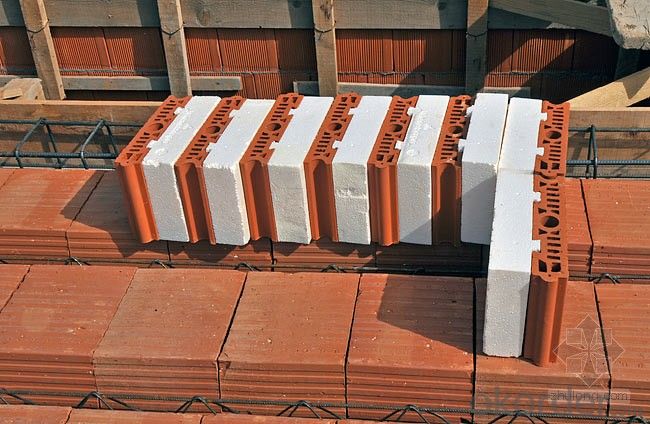
Common problem solutions
1. What products do you have?
We have all kinds of refractory bricks, refractory casting materials, mortar, cement, ceramic fiber products, etc..
Or you can browse our products to choose what you need.
2. How to control product quality?
With strict quality control system throughout the material selection and production process, we have the quality of refractory materials and ceramic fiber products to meet customer requirements.
From the selection of raw materials, the quality of our control to start. The quality certificate of the raw material is required, each batch of the products are to be tested in the use of the forward line. In the production process, the quality control by the workers, and then each piece of classification, and through the quality supervision and inspection.
3. Can you give me a brief introduction to the application of your product?
My company is mainly engaged in refractories in the steel, cement, glass, ceramics, petrochemical, electric power and other industries.
4. What information do you need if I need you?
In order to select the right products, we will provide us with information, such as the United States, technical data, order quantity, product application, etc..
If you have any questions, please contact us.
- Q: Can insulating fire bricks be used in the construction of lime production ovens?
- Yes, insulating fire bricks can be used in the construction of lime production ovens. Insulating fire bricks are specifically designed to withstand high temperatures and provide excellent thermal insulation. Lime production ovens require materials that can withstand the extreme heat generated during the process of converting limestone into lime. Insulating fire bricks not only have a high heat resistance, but they also have low thermal conductivity, which helps to minimize heat loss and improve energy efficiency in the lime production process. Additionally, insulating fire bricks are lightweight and easy to handle, making them suitable for the construction of lime production ovens.
- Q: How do insulating fire bricks help to conserve energy?
- Insulating fire bricks help to conserve energy by providing excellent thermal insulation, reducing heat loss and improving energy efficiency. These bricks have low thermal conductivity, which means they are highly resistant to heat transfer. As a result, they prevent the escape of heat from furnaces, kilns, or other high-temperature applications, allowing for better heat retention and reduced energy consumption.
- Q: Can insulating fire bricks be used in biomass boilers?
- Yes, insulating fire bricks can be used in biomass boilers. These bricks are designed to withstand high temperatures and provide excellent insulation, making them suitable for use in biomass boilers where heat retention is crucial for efficient combustion.
- Q: What is the typical porosity of an insulating fire brick?
- The typical porosity of an insulating fire brick varies depending on the specific type and composition of the brick. However, in general, insulating fire bricks have a porosity range of 40% to 70%. The porosity refers to the amount of open space or voids within the brick structure. These voids allow for the brick to have better thermal insulation properties by reducing heat transfer. The higher the porosity, the better the insulation capability of the brick. Manufacturers of insulating fire bricks often aim for a specific porosity range based on the desired thermal conductivity and insulation efficiency.
- Q: Are insulating fire bricks suitable for thermal insulation in boilers?
- Yes, insulating fire bricks are suitable for thermal insulation in boilers. They have high thermal conductivity and can withstand high temperatures, making them an effective choice for insulating the walls and floors of boilers. Their ability to retain heat helps in improving energy efficiency and reducing heat loss, ultimately enhancing the overall performance of the boiler system.
- Q: Are insulating fire bricks suitable for use in furnaces?
- Indeed, furnaces can indeed benefit from the utilization of insulating fire bricks. These exceptional bricks are meticulously crafted to endure extreme temperatures and deliver remarkable insulation capabilities. By employing lightweight materials with minimal thermal conductivity, they effectively retain heat and minimize energy dissipation within the furnace. Withstanding temperatures up to 3000°F (1650°C), these bricks are extensively employed in a range of furnaces, such as kilns, incinerators, and industrial furnaces. Their insulation properties significantly enhance energy efficiency and curtail fuel consumption, rendering them a preferred selection for furnace applications.
- Q: Can insulating fire bricks be used in cement kilns?
- Indeed, in cement kilns, insulating fire bricks find their utility. These bricks are specifically engineered with a low thermal conductivity, rendering them an excellent choice for insulating environments that endure high temperatures, like cement kilns. By employing these bricks, heat loss can be minimized, thereby enhancing energy efficiency within the kiln. Furthermore, their lightweight composition facilitates ease of handling and installation in the kiln. Nevertheless, it is crucial to carefully select insulating fire bricks that align with the unique operating conditions and demands of the cement kiln to guarantee utmost performance and durability.
- Q: Can insulating fire bricks be used in DIY projects?
- Yes, insulating fire bricks can be used in DIY projects. They are commonly used in various DIY applications such as constructing fire pits, ovens, kilns, and for lining chimneys. These bricks have excellent insulation properties, can withstand high temperatures, and are easy to work with, making them ideal for DIY projects requiring heat resistance.
- Q: There are several construction techniques for exterior wall insulation
- Exterior wall internal insulation technologyThe interior heat preservation of the wall is to place the heat insulation material on the inside of the outer wall.Advantage:1) waterproof, weather resistance and other technical indicators of finishes and insulation material requirements are not very high, gypsum board, gypsum plaster mortar can meet the use requirement, convenient;2) the internal insulation material is separated by the floor slab and is only constructed within a high storey without scaffolding;3) in the hot summer and cold winter and hot summer and warm winter zone, the inner heat preservation can meet the requirement;4) for the energy transformation of existing buildings, especially at a time when the housing sold to individuals, the whole building (source: China insulation network) or the entire district unified reform is difficult, only by the possibility of a large number of internal insulation. Therefore, in recent years, the exterior wall insulation has also been widely used.Shortcoming:1) because of beam, slab, structural column will cause thermal bridges, more heat loss;2) due to the material, structure, construction and other reasons, the cracking of the facing layer;3) it is not convenient for users to decorate two times and hang ornaments;4) occupy indoor use space;5) the energy saving of the existing buildings is very disturbing to the daily life of the residents.6) wall under outdoor climate, the temperature difference between day and night and the large temperature difference between summer and winter, easy to cause the wall cracking.
- Q: What is the average density of insulating fire bricks?
- The average density of insulating fire bricks typically ranges from 0.6 to 1.2 grams per cubic centimeter.
Send your message to us
Insulating Fire Brick - Refractory JM Mullite Insulation Brick B-1
- Loading Port:
- Shanghai
- Payment Terms:
- TT OR LC
- Min Order Qty:
- 10 m.t.
- Supply Capability:
- 1000 m.t./month
OKorder Service Pledge
OKorder Financial Service
Similar products
Hot products
Hot Searches
Related keywords
